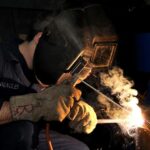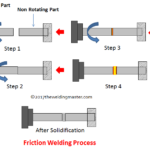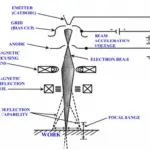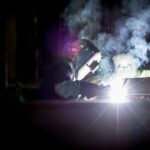Introduction:
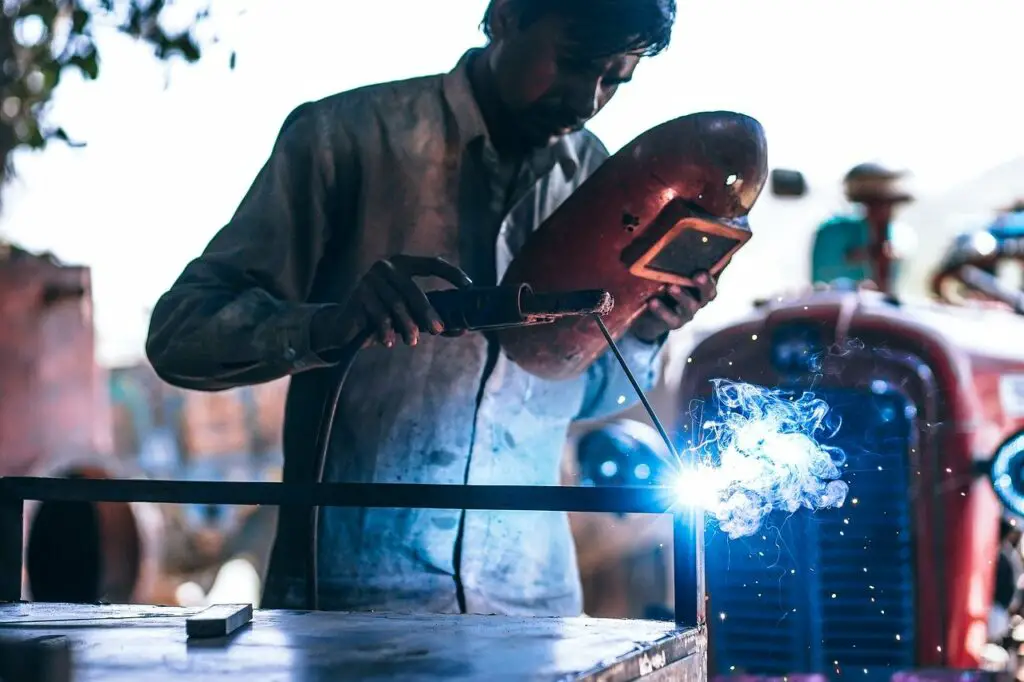
Welding is the Joining Process, which is used in almost all Industries. The Engineers working in the Welding department requires to have good knowledge of different Joining processes in detail. Apart from the Engineers, Welders also need to have good knowledge because it is used in their day-to-day lives. Arc Welding is the most widely used Welding process because of its simplicity. Although there are various issues concerning the process, there are specific applications for which we can use it. Under this Article, we will be learning about Arc Welding process in detail from Working to Application. So, Let’s get started.
Definition and Basic Terminologies:
The Arc Welding process is used to produce an electric arc that increases the temperature and melts the joining metal so that after Solidification, they become a single metal piece. This Joining process uses a Transformer that can Supply the required Voltage and Current to produce the required Spark, enough to melt the Metals to be Joined. We can use either D.C. (Direct current) or A.C. (Alternating current), with both Consumable and non-consumable Electrodes.
Arc Welding Circuit Diagram
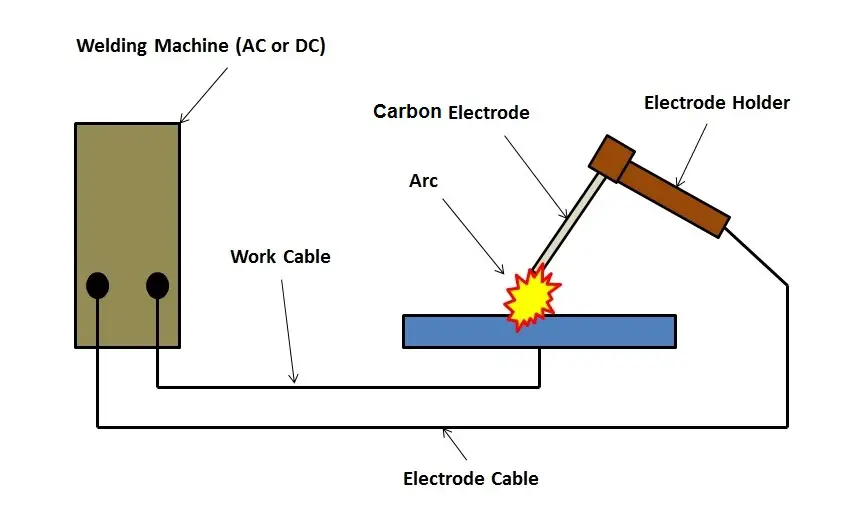
Fig: Basic Circuit Diagram of arc welding
Important Terminologies used are as follows:
1. Electrodes: The Positive and Negative point of the terminal between which a high amount of Voltage difference is maintained, is called Electrode.
2. Workpiece: The Metal which is going to be Joined are called as Workpiece. It is also called as Base metal.
3. Flux: It is a combination of Carbonates and Silicate material used in Welding, which forms a Shielding Environment around the Workpiece.
4. . Welding Machine: The Machine that supplies Current according to the requirement and Intensity of Welding, and through which the Positive and Negative terminal of Electrodes are connected.
5. Arc Voltage: The Voltage that runs across the WeldingArc.
Main Parts of Arc Welding:
Following are the main parts of Arc Welding:
1. AC/DC Machine:
The Machine provides the required current and Voltage for the production of Arc.
2. Electrode:
There are two Electrodes, Positive and Negative. The Arc has been produced due to the high voltage difference between these Electrodes.
3. Cable and Cable Connectors:
Cables are used to connect the Electrodes to produce current and develop the required Potential difference.
4. Earthing Clamps:
It ensures that the circuit is closed between the Power source and the Workpiece.
5. Chipping Hammer:
It is used to remove the extra Electrode deposited on the Joined Workpiece.
6. Welding Helmet:
It protects the Spark from entering the eyes and other parts of the face. So It is advised to choose the best helmets for weldings.
7. Safety goggles:
It is specifically designed to protect the Eyes from Harmful Ultraviolet and Infrared radiation.
8. Wire Brush:
It is used to clean the Weld surface and remove the rust, slag, Etc.
9. Hand Gloves:
It is used to protect the Hands from touching hot parts of the components and protect them from the falling sparks
10. Aprons or Jackets:
They protect other Body parts from Sparks, UV, and Infrared radiation.
Working Mechanism of Arc Welding
The Working mechanism can be easily understood by understanding the Working of Lightning that strikes the ground. It is created due to the ionisation of vacuum layer, which makes them a good conductor. The whole layer from the Sky to the bottom helps in transferring lighting to the ground. The Place where the Lighting strikes become very hot, and the spot can be seen after some time.
If you can understand the Working of Lightning from the Sky, understanding the Working of Arc Welding is easy. Replace the Sky with an Energy source, lightning with the Arc produced, and the ground with the metal needed to be joined. The Produced Arc heats the different metals and makes them a single metal piece.
The Working Mechanism is divided into three parts:
- Formation of Arc
- Heating the Workpiece and melting
- Solidification and Joining
Creation of Arc:
Arc is formed between two points if there exists an electric potential difference between them. The formation of Arc from the Electric Potential difference happens through the dielectric breakdown. It is a phenomenon in which the particles between the two points break down, temperature becomes very high, and the arc is produced. The Increase in temperature depends upon the current supplied and Voltage maintained. Therefore, big transformers are used to provide current directly to the Welding Machine.
Plasma State
Apart from the most commonly occurring three states of matter- Solid, liquid, and gases, we have two more States of Matter successfully established and stabilized. These are Plasma, Bose-Einstein Condensate.
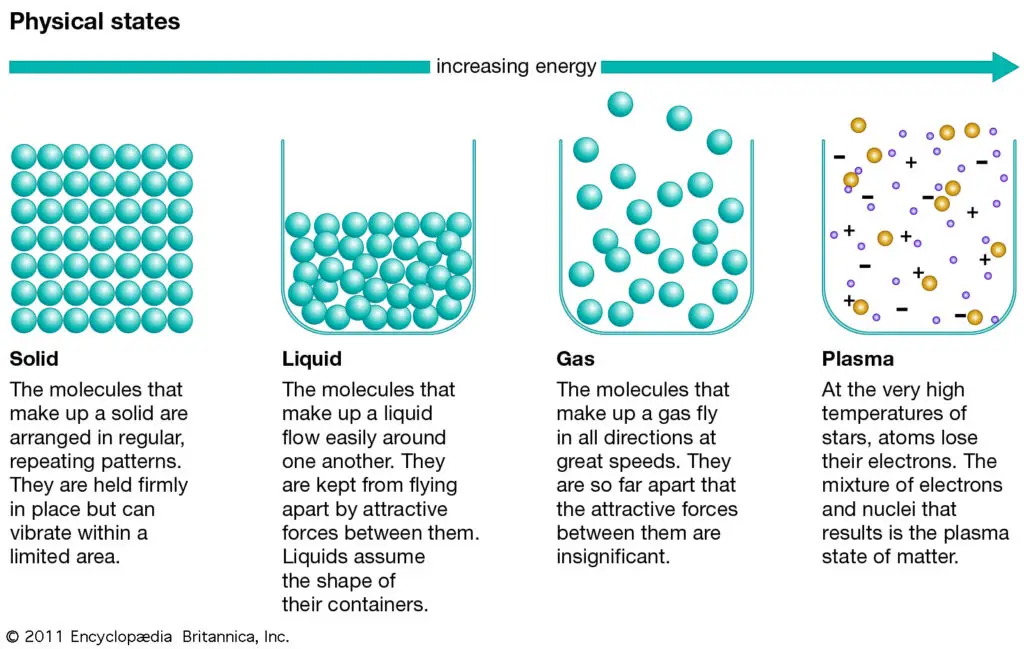
Fig.3: Different State of Matter
Explaining in simple sentences; Plasma state is a high temperature, High Energy state, which is a combination of Neutral atoms and Ionized particles. During Arc Welding, the potential difference between the two points becomes so high that the particles between the points are ionized, and electrons are removed from the adjacent atom to neutralize them. Hence, a state is created where the temperature and energy is very High, and Ionized particles and Neutral atoms are present together.
Complete Working:
It is a fusion Welding process used to join two metal pieces. The Supplied voltage is sufficient to create a good amount of heat between the Electrode and the metal piece (around 65000 F), which melts the metal. The produced Arc is guided towards the joining point, and both the Pieces melt and solidifies together to become single Metal Piece.
To Understand the working of Arc Welding more Clearly. Watch the Video :
Different Types of Arc Welding:
The Process of Arc Welding can be divided on various basis. Here, we will be mainly discussing on the basis of Electrodes, whether the used electrodes are consumable or non-consumable.
The figure below briefly describes the complete classification of different types of Arc Welding process on the basis of Electrodes:
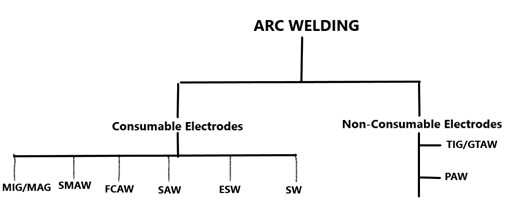
Types Based on Consumable Electrodes:
There are six different types of Processes in which electrodes are consumed, which are as follows:
1. Metal Inert gas (MIG)/ Metal Active Gas (MAG) Welding:
It is also called as Gas Metal Arc Welding (GMAW). Here, we use an Inert gas atmosphere for Arc creation which protects the Joining metal from Contamination.
To understand the working of MIG/MAG Welding, watch this Video
2. Shielded Metal Arc Welding (SMAW):
It is also called Stick Welding or Manual Metal Arc Welding. The Welded metal that is formed is protected from the atmosphere by the shielding gas and slag produced.
To understand the working of shielded metal Arc Welding, watch this Video
3. Flux-cored Arc Welding (FCAW):
This type of Welding can be a good substitute for SMAW. It uses the gas formed by the Flux to shield from the Air, to save the metal from Contamination. The Shielded gas is produced by the continuous supply of Flux-cored Electrode.
To understand the working of Flux-cored Arc Welding, watch this Video
4. Submerged Arc Welding (SAW):
It creates an Arc between the Constantly fed electrode and the workpiece. The Arc creates a cover of Fusible flux, which creates a gas shielding around the metal, to save it from Corrosion.
To understand the working of Submerged Arc Welding, watch this Video
5. Electro-Slag Welding (ESW):
This Welding process uses a Molten Slag, created by the heat of Electrical Supply, to cover the Weld Surface. The created Slag resist the passing of Current, which in turn creates the Heat for Metal to melt. The Metal solidifies on getting in contact with Water.
To understand the working of Electro Slag Welding, watch this Video
6. Arc Stud Welding (SW):
This type of Arc Welding is used to join Metal pieces with Stud components, such as Nut, bolt, etc.
To Understand the working of Arc Stud Welding, watch this Video
Based on Non-consumable Electrodes:
There are two types of Welding process, on the basis of non-consumable Electrodes, which are as follows:
1. Tungsten Inert Gas Welding (TIG):
This type of Welding process is also called as Gas Tungsten Arc Welding (GTAW). It uses a non-consumable electrode for the production of Arc. The Produced Arc works as a Shielding gas to protect Metal from Corrosion.
To understand the working of Tungsten Insert Gas Welding, watch this Video
2. Plasma Arc Welding (PAW):
This process produces an Arc between the Metal and Electrode. Here, the Plasma gas is separated from Shielding gas, which is responsible for producing fine and deep Welds.
To understand the working of Plasma Arc Welding, watch this Video
Issues with Arc Welding:
Although this type of Welding finds many applications in the Industries because of the availability of different kinds of Subcategories, it has various issues that one should take care of. They are mainly categorized into two different types, which are as follows:
1. Corrosion Related Issues:
We have seen from the types explanation that all works on creating a Shielded environment to save the metal from Contamination. Due to very high temperatures, Molecules around the Metal break down into smaller molecules such as Oxygen, which can react at such a high temperature to convert it into metal Oxide, and corrosion will start.
To save the metal from Contamination, either an Inert atmosphere is used (as in MIG, TIG, Etc.), or a Shielded gas atmosphere is used (SMAW, Etc.). This helps to save the metal from Contamination by not Interacting with the Atmosphere. One more important thing to notice is that if the metal piece to be welded is of different composition, the Corrosion effect can be severe.
2. Safety Related Issues:
Welding can be dangerous and unhealthy practice without any precautions. We need to use a proper PPE (Personal Protective equipment) Kit before doing Welding. The main Health-related Issues Includes:
(i) Inhaled Matter:
During the Welding process, Welders are exposed to different types of matter, which can be dangerous. For example, during flux-cored Welding, smoke produced contains various Oxides that are very harmful to Health. Hence, we should cover our face before performing any Welding process.
(ii) Interference with Pacemakers:
The process produces a high-frequency Alternating current, which can interfere with Pacemakers working 2 meters from the Power unit and 1 meter from the Weld site.
(iii) Eye Damage:
This Welding process produces high-Intensity Spark, which can cause a high amount of damage to the eyes. When looked at directly during the Welding operation, eyes can turn red and create Pain for days. Hence, we need to use Welding goggles to protect our eyes during Welding compulsorily.
(iv) Heat, fire, and Explosion Hazards:
The temperature rise in the core of Welding can be as high as 65000 F, which can create much Heat. The Sparks created can fall on the Body, or an explosion can occur. Hence, during Welding, we should cover our Body with adequately designed equipment. We should also take care that no explosive material is present near the Welding area.
Advantages:
Apart from all the Issues, it provides different advantages because it is used in many industries. Some of them are as follows:
- Suitable for any Environment: Different Welding process mechanism uses shielding of such type to do in a specific Environment. We can use Arc Welding process in any Environment.
- Usage of unclean Metals: The process can be performed directly on dirty metals, and there is no need to clean the Surface.
- Portability: The material used in this process is highly portable
- Low Cost: The Welding process is straightforward; hence it is of very low cost.
Disadvantages:
Apart from the Issues related to Corrosion and Safety, there are other disadvantage of this process, which are as follows:
- Requirement of Skill: A very highly skilled person is required to give a perfect Surface finish.
- Thin Metal: This process has some problems working with Thin Metals.
Applications:
The most common application of this type of Welding process is in the Automotive, Aerospace, Oil and Gas, Power, and Construction based Industries.
FAQs:
Q 1: Where will we not be able to use Arc Welding?
Answer: We can use it almost everywhere. Although it can’t be used by beginners as there are many safety requirements. It is also not effective in Joining two dissimilar metals.
Q 2: Who are Pacemakers?
Ans: Pacemakers are implantable defibrillator, which is affected by the frequency of Alternating current during Welding.
Q 3: How is residual stress developed in Arc Welding?
Answer: During Heating and Instantaneous Solidification develops some amount of residual stress in Metal during Arc Welding. To eliminate this, the Solidification is done after some time of Heating.
REFERENCES:

